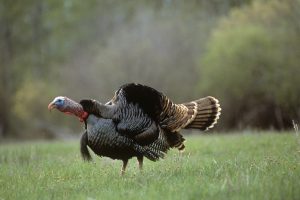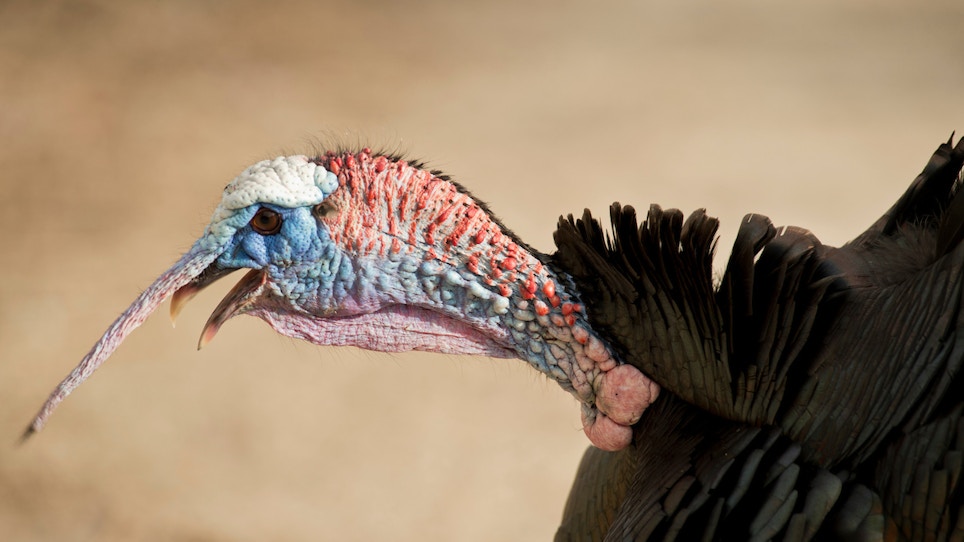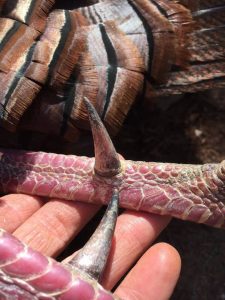 Today, when there are so many wild turkeys in America that they’ve become a nuisance in some urban and suburban areas, today’s turkey hunters often have a hard time imagining a far different story. Less than a hundred years ago -- back in the early 1930s -- the wild turkey in America was near extinction. Lack of quality habitat was the key culprit but, with the passing of the Pittman-Robertson Act in 1937 (an excise tax on sporting arms and ammunition), wildlife restoration programs now have critical dollars needed to fund wild turkey and turkey habitat restoration projects.
Today, when there are so many wild turkeys in America that they’ve become a nuisance in some urban and suburban areas, today’s turkey hunters often have a hard time imagining a far different story. Less than a hundred years ago -- back in the early 1930s -- the wild turkey in America was near extinction. Lack of quality habitat was the key culprit but, with the passing of the Pittman-Robertson Act in 1937 (an excise tax on sporting arms and ammunition), wildlife restoration programs now have critical dollars needed to fund wild turkey and turkey habitat restoration projects.
Couple that with the invention of the rocket net — which enabled wildlife agencies and the National Wild Turkey Federation (www.nwtf.org) to more readily and easily trap and transfer turkey populations to areas of suitable habitat — and numbers today have skyrocketed. Yep, from only about 30,000 turkeys in the early 1900s to nearly 7 million today … now that is a conservation story!
Related: What are Those Blasted Birds Saying?
Here are 10 facts about Meleagris gallopavo that will amaze your friends!
10) Feather tracts. Between 5,000 to 6,000 feathers cover the body of an adult turkey in patterns called feather tracts. A turkey's feathers provide a variety of survival functions: they keep the birds warm and dry, allow them to fly and the features are used when a male bird strut, showing off for the opposite sex. The head and upper part of the neck are featherless. Most of the feathers exhibit a metallic glittering, called iridescence, with varying colors of red, green, copper, bronze and gold.
9) Only males have spurs. Both sexes have powerful legs covered with scales and are born with a small button spur on the back of the leg. Soon after birth, a male's spur start growing, become pointed, sharp and curved. It can grow to about two inches. Most hens’ spurs do not grow any longer.
8) Only gobblers have beards (mostly). A gobbler’s beard is really tufts of filaments, or modified feathers, growing out from the chest. Jake’s have beards of 3 to 4 inches in length, while a 2-year-old gobbler has a 7- to 9-inch beard. Older gobblers have beards of 10-plus inches. A mature gobbler will have a beard that is about 9 inches, though they can grow much longer. Footnote: An estimated 10 to 20 percent of hens have beards.
Related: Hunting Turkeys on Public Land
7) Vision. While wild turkeys have excellent daytime vision, they cannot see worth beans at night.
6) How fast can a turkey run? Turkeys can run at speeds up to 25 mph and can fly up to 55 mph.
5) Hens don’t carry a clutch, but they do lay them. Hen turkeys lay a “clutch” of 10 to 12 eggs over a 10 to 14 day period, usually laying one egg per day. Eggs are incubated for about 28 days, occasionally turning and rearranging them until they are ready to hatch. A newly-hatched flock must be ready to leave the nest within 12 to 24 hours to feed.
4) Feeding time. Turkeys prefer feeding in the afternoon, though they also feed during morning hours when they hit the ground off the roost. And they can nibble a bit during midday hours as well.
3) Subspecies: majorities and minorities. According to the National Wild Turkey Federation, of the five wild turkey subspecies in North America, the Eastern is the most common, with an estimated 5.1 to 5.3 million turkeys. Next most common is the Rio Grande (1.25 million); Merriam’s (350,000); Gould’s (less than 5,000) and Osceola (no estimates available).

Wild turkey tom, or male bird, in full strut, gobbling in reply to a hen's call. (Photo: John Hafner)
2) It is normal for turkey populations to rise and fall. The three major threats to turkey populations are: a) Loss of prime turkey habitat to human development and lack of proper land management that can negatively impact nesting success; b) efficient nest predators like raccoons and opossums, with crows and ravens acting as the biggest avian nest predators; c) cold, wet spring weather that can adversely affect poult survival.
1) How do turkeys strut? It’s simply, really. At the base of the tail there are small muscles at the base of each feather that allow turkeys to move their feathers. These muscles are connected to other very small muscles within the skin. When a turkey struts, it contracts the muscles that control feather position, causing the body feathers to stand erect. Also, gobblers have the ability to relax and contract small blood vessels in the head and neck skin causing changes in skin color. Blood vessels and muscles also control the lengthening and contraction of the snood.
Top 10 Bonus: The wild turkey is a fascinating creature, one that Benjamin Franklin recommended be named the United States’ national bird instead of the bald eagle.
For more wild-turkey facts, hunting tips and land management tactics, find more of Grand View Outdoors’ wild-turkey coverage here.
Featured image: John Hafner







